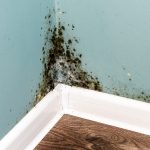
“If you had $10-15K to spend on heating, ventilation or double glazing, how do you think that money would best be spent?”
A lot of banks have recently released interest-free loans for home improvements – a great initiative from NZ banks. But how do you spend this money wisely to get the most bang for your buck, without causing undue damage to your home? Oculus has put together some recommendations and advice for Kiwi homeowners thinking about upgrading their homes.
What we’re trying to achieve (in this order):
- Mechanical ventilation and airtightness
- Heating to maintain a consistent indoor air quality
- A temperature above minimum of 16 degrees all the time and a comfortable temperature when occupied
- A Relative Humidity between 40% & 60%
- Low levels of internal contaminants such as CO2 and VOCs
- High-performance windows and window frames
- Good insulation in the roof, floor and walls
You don’t have to do everything at once if you can’t afford it. Start with what you can afford and work towards a long-term goal of improving the health of your home. If you are doing things slowly, it is crucial that you get the order right – the reasons for this are explained below.
Different house types will need different improvements. For example, a big old drafty 1920’s villa will perform differently to a townhouse or apartment built within the last 20 years, which will perform differently to a 1960’s ex-state house. (Scroll to the end of the article for more house-type specific advice).
If you take on our recommendations your house will be so efficient, you shouldn’t need to spend so much on heating!
- Improve ventilation and airtightness
These two should ideally be dealt with at the same time. But if you can only afford one, start with ventilation and improve airtightness second.
Ventilation is vital for keeping you, and your home, healthy. Ventilation brings fresh air into the home and expels stale air, preventing a build-up of dangerous pollutants.
There is a difference between natural and mechanical ventilation – natural ventilation relies on infiltration (draughts) or opening windows or doors. This can provide a good source of fresh air if the weather is favourable. But, in Auckland, our weather is suitable for natural ventilation only 8% of the year.
Mechanical ventilation allows you to manage the flow of fresh air coming into your home and stale air going out. Unlike natural ventilation, incoming air can be tempered or treated to be comfortable. Mechanical ventilation can combine with airtightness for the best performing homes.
The best option is mechanical ventilation with heat-recovery (MVHR). This option might cost more initially, but it is definitely worth it over the long term because as the name suggests, it recovers heat from the outgoing air and transfers it to the fresh air, preheating it before it reaches your home and ultimately saving you money on your power bill.
If you can’t afford MVHR, the next best alternative is to install extractor fans in your bathroom, laundry and kitchen. This is known as a negative pressure ventilation system. Choose extractor fans that have at least two settings, a slow setting that continuously draws air out and a fast setting for when you’re using these rooms. The Manrose Intellivent is around $300,- and can be installed in an hour. It has two speeds and a humidity sensor which boosts the fan. It costs approx 5c per day to run.
Use the extract fans on the slow setting all the time. Note: if you can’t see a duct above your kitchen extract fan it’s not venting to the outside, so you’ll need an upgrade!
Now that you’ve got the ventilation sorted, we can move onto airtightness. Air flowing in and out of the home takes heat with it. When the wind blows, it forces cold air into the house, replacing the warm air. These draughts are uncomfortable and make it difficult or impossible to maintain healthy indoor temperatures. Gaps under or around doors and windows, or open chimneys are the most common places for heat to escape.
Cracks and gaps you can see are relatively obvious. However, air can flow around other smaller gaps like electrical outlets, attic roof hatches, recessed light fixtures, wall junctions and window openings. Any place one material meets another is a potential air leakage path. Use a sealant to close these gaps or even temporary seals like tape can be useful in some instances. Airtightness testing, known as a Blower Door test can provide a benchmark of your homes airtightness and can also help you to find and stop heat from escaping.
- Heat your home!
This applies to all types of houses, heat your whole house continuously. Yes, that means leaving the heater on even when you go to work in the morning and when you go to sleep at night. We know it might sound expensive* or lavish but keep in mind that you’re trying to maintain a consistent temperature above a minimum of 16 degrees. You can warm it up to a toasty 22-24 degrees when you want to, but by continually keeping the building above the 16 degree threshold, you are preventing what is known as the “mould-growth cycle”. This is referring to mould growing in your walls. Wall mushrooms make you sick, heat your home!
If you don’t have a heat pump, a simple temperature-controlled wall adapter costs about $30 from a hardware store and lets you sit back and relax while your heater maintains a healthy 16 degree minimum temperature.
If your main source of heating is a wood burner, consider getting an electric heater with an in-built thermostat so that you can leave that to maintain a temperature above 16 degrees when the fire is not going.
*It’s also been proven that heat pumps use no more electricity to heat continuously than intermittently.Reference: BRANZ SR414.
- Improving Windows:
When we refer to windows, we mean windows and window frames (and doors and door frames too).
You all know about double glazing so we won’t bore you with the details. Next, is window frames: The majority of NZ window frames are made of aluminium. Aluminium, while very durable, is not a good window frame material on its own. It is the 7th most conductive material known to science, so it needs some help from what we call “thermal breaks”. These work by breaking the thermal path of a window frame so that the inside stays warm and the outside stays cold (or the other way round in summer). Another option is a frame material such as wood, uPVC or pultruded fibreglass – all of which are much less conductive than aluminium.
Cheat’s double glazing: If you have single-glazing and haven’t yet got the cash for a full upgrade, a $30 window film kit from a hardware store is an inexpensive way to create a pocket of still air that provides extra insulation in the winter. Unlike curtains, using a plastic film prevents humid air from reaching the cold exterior window surfaces. It improves the energy efficiency of single glazed windows by 80%, and takes 20minutes per window to install.
While we would love it if all houses were well-insulated, it’s interesting to think that improving your windows often has a better cost-benefit ratio than improving your wall insulation! That’s why we recommend improving your windows before your insulation.A little more detail on that is explained in this Building Science article BSI-007
- Improving Insulation:
When we refer to insulation, we mean roof, floor and wall insulation. All three are important as heat will flow out of your home through the easiest path it can find.
Batt insulation slows the flow of heat by trapping small pockets of air inside. A whole-house approach for insulation is needed. A lack of insulation in ceiling and floors results in heat loss, but walls and windows make up most of the heat loss from a home. Insulation slows heat loss but doesn’t stop it, so heating is still required.
Remember that it’s the small pockets of air in the batt insulation that are doing the insulating. To get the best performance out of the insulation, you need to prevent wind and airflow disrupting these small pockets. This is especially true when you are installing under-floor insulation: batt insulation is not the best option here and you’re better off with a rigid insulation such as EPS (expanded polystyrene).
While we recommend improving your insulation as the final step in this process, if you are adding on to your house, or re-lining any exterior walls, you should absolutely take the opportunity to add as much insulation as possible. If you’re re-cladding or re-roofing your home, look into the benefits of external insulation!
Things to avoid:
DON’T improve airtightness without ventilation. This is a recipe for disaster, it may seem obvious but you cannot seal up your home without first making sure that there is a healthy amount of ventilation to get rid of moisture, and excess carbon dioxide.
DON’T upgrade to double glazing without thermal frames. If you decide to go for double glazing, make sure the frames are thermally broken (or uPVC or fibreglass) this makes sure that you don’t lose all your heat through the frames.
DON’T install a positive pressure ventilation system. Not all mechanical ventilation systems are created equal. Positive pressure systems are a big NO for relatively airtight houses. If there are no gaps and cracks, the warm, moist air is forced out through your walls, roof and floor and can result in condensation inside your walls. Over time, this creates a breeding ground for unhealthy mould that you probably won’t be able to see. Another problem with most positive pressure systems is that they draw contaminated air from the roof space into your home.
DON’T turn heating on and off. As we explained above, turning off the heating may seem like it will save energy but this leaves the room colder when you want to heat it back up later. Even when the room is empty, maintain a background temperature above 16 degrees. Maintaining a constant temperature can be more energy-efficient than manually turning the heater system off and on yourself. It also helps dry out the house when you aren’t in the room, evaporating any moisture through ventilation.
DON’T use a dehumidifier without heating and ventilation. Heating and ventilation are the best ways to reduce moisture. These are more effective and healthier solutions than dehumidifiers.
DON’T invest in thermal curtains. Curtains provide some insulating benefit if they create a pocket of still air, but that prevents warm interior air from reaching the window. Cold glass surfaces, warm moist internal air and hey presto! The curtains do not impede the flow of moisture so thermal curtains often make condensation problems worse.
House-type specific advice:
1910-1920’s Villa: I’m guessing you can feel the wind inside? Airtightness and ventilation (at the same time) are the most important steps for this type of house. You’ll likely have no wall insulation so work on installing that when you can afford it. If you’re replacing weatherboards from the outside, you can also use this opportunity to install wall insulation. Another common feature of this type of house is wooden window frames. The wood actually performs relatively well, but 100-year-old sash windows are often very air leaky so your focus should be on filling any gaps and cracks. You can also talk to a glazier about installing double glazing if it is possible for your windows (also see “cheats double glazing” above). Wooden floorboards found in villa’s are often very prone to air leaks, so work on sealing off the underside of the floor once you have the underfloor insulation in.
Apartment/Townhouse/New home: Built within the last 20-30 years – ventilate ventilate ventilate! Your house is probably going to be (relatively) airtight already so the most important thing you need to do is ensure that there is enough ventilation to keep your internal air dry and healthy. This type of home should NEVER have a positive pressure ventilation system, you will need a balanced mechanical ventilation system (ideally with heat recovery), or if your budget is tight, a negative pressure system is an acceptable alternative.




